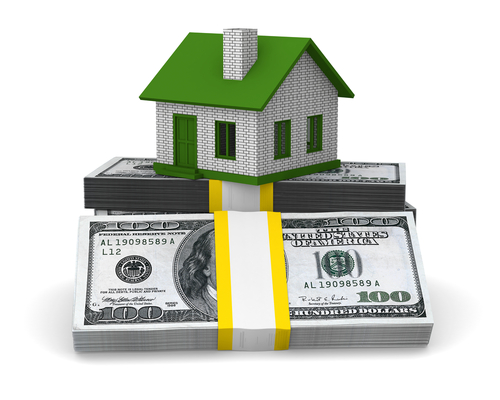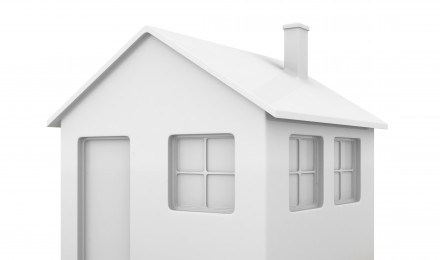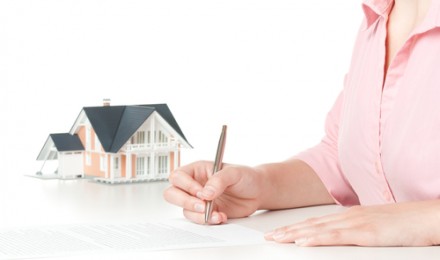When to Stop Paying Private Mortgage Insurance
Generally, most homebuyers who make less than a 20% down payment toward a home mortgage must pay for private mortgage insurance (PMI). PMI refers to insurance that mortgage lenders require for homebuyers with loan-to-value ratios higher than 80 percent.
Data shows that homeowners who make down payments of less than 20 percent have a higher rate of default. PMI is critical to the home mortgage industry because it provides the incentives lenders need to make home loans. Private mortgage insurance protects lenders from loss in the event of the homeowner default.
PMI allows homebuyers to purchase homes with down payments as low as 3 to 5 percent. Otherwise, potential homebuyers would have to wait for years to save a 20 percent down payment and purchase a home because lenders would refuse to make the loan.
According to Zillow.com, the initial premium for private mortgage insurance runs about 1-5% of the loan amount. The borrower may also pay monthly charges.
When to Stop Paying PMI
Unlike mortgage interest payments, a homeowner cannot deduct PMI on the tax returns. However, you can stop paying for private mortgage insurance once the loan-to-value ratio dips below 80%. The law requires lenders to tell you at closing how long you will have to make PMI payments.
You can calculate how much time you have left to pay PMI by dividing the remaining principal balance by the original purchase price of your home. If the figure falls below 80%, contact your loan servicer to find out the procedure for removing the PMI. Make it your responsibility to track your LTV ratio and contact the lender to stop PMI coverage when appropriate.
Appreciation and PMI
Homeowners who have not had a mortgage for very long may also qualify to drop private mortgage insurance if the home increases in value. Mortgage lender may order a full appraisal, which cost an average of around $300. However, you can recover the expense by elimination the mortgage insurance premium. After you pay for the cost of the appraisal, the subsequent amount saved goes into your coffers. You can also increase your home’s value by making improvement or additions.
Other PMI Options
Ask the lenders to explain other options or in-house programs that can eliminate the need for you to purchase private mortgage insurance. For example, a lender can offer a first mortgage for 80% LTV and a second mortgage for 10 %. Another variation on the may be 80% – (first mortgage, 15% -second mortgage and 5 percent down payment. This will require the borrower to make a 10% down payment.
Some lenders calculate the PMI into the mortgage interest rate, which increases the rate. In this case, the interest is deductible on the tax returns. You should check around for private mortgage insurance and make some comparisons.
Mortgage Insurance Premiums
For homeowners with mortgages insured by the Federal Housing Agency (FHA), and your loan closed before January 1, 2001, you must pay the Mortgage Insurance Premium (MIP) throughout the life of the loan. Other FHA-insured borrowers can find out their option based on the following standards:
1. Mortgages as with terms longer than 15 years, when the LTV reaches 78% and a minimum of five years of MIP payments
2. Loans with terms 15 years or less, mortgages with LTVs 90% or higher – canceled with the LTV reaches 78%
3. Mortgage with terms 15 years or less and LTVs 88.99%, lender will not charge for MIP.
Whether you have PMI or MIP, make it your responsibility to track your LTV ratio and contact the lender to stop coverage after you have accumulated the necessary equity in the home.
When to Stop Paying Private Mortgage Insurance
Generally, most homebuyers who make less than a 20% down payment toward a home mortgage must pay for private mortgage insurance (PMI). PMI refers to insurance that mortgage lenders require for homebuyers with loan-to-value ratios higher than 80 percent.
Data shows that homeowners who make down payments of less than 20 percent have a higher rate of default. PMI is critical to the home mortgage industry because it provides the incentives lenders need to make home loans. Private mortgage insurance protects lenders from loss in the event of the homeowner default.
PMI allows homebuyers to purchase homes with down payments as low as 3 to 5 percent. Otherwise, potential homebuyers would have to wait for years to save a 20 percent down payment and purchase a home because lenders would refuse to make the loan.
According to Zillow.com, the initial premium for private mortgage insurance runs about 1-5% of the loan amount. The borrower may also pay monthly charges.
When to Stop Paying PMI
Unlike mortgage interest payments, a homeowner cannot deduct PMI on the tax returns. However, you can stop paying for private mortgage insurance once the loan-to-value ratio dips below 80%. The law requires lenders to tell you at closing how long you will have to make PMI payments.
You can calculate how much time you have left to pay PMI by dividing the remaining principal balance by the original purchase price of your home. If the figure falls below 80%, contact your loan servicer to find out the procedure for removing the PMI. Make it your responsibility to track your LTV ratio and contact the lender to stop PMI coverage when appropriate.
Appreciation and PMI
Homeowners who have not had a mortgage for very long may also qualify to drop private mortgage insurance if the home increases in value. Mortgage lender may order a full appraisal, which cost an average of around $300. However, you can recover the expense by elimination the mortgage insurance premium. After you pay for the cost of the appraisal, the subsequent amount saved goes into your coffers. You can also increase your home’s value by making improvement or additions.
Other PMI Options
Ask the lenders to explain other options or in-house programs that can eliminate the need for you to purchase private mortgage insurance. For example, a lender can offer a first mortgage for 80% LTV and a second mortgage for 10 %. Another variation on the may be 80% – (first mortgage, 15% -second mortgage and 5 percent down payment. This will require the borrower to make a 10% down payment.
Some lenders calculate the PMI into the mortgage interest rate, which increases the rate. In this case, the interest is deductible on the tax returns. You should check around for private mortgage insurance and make some comparisons.
Mortgage Insurance Premiums
For homeowners with mortgages insured by the Federal Housing Agency (FHA), and your loan closed before January 1, 2001, you must pay the Mortgage Insurance Premium (MIP) throughout the life of the loan. Other FHA-insured borrowers can find out their option based on the following standards:
1. Mortgages as with terms longer than 15 years, when the LTV reaches 78% and a minimum of five years of MIP payments
2. Loans with terms 15 years or less, mortgages with LTVs 90% or higher – canceled with the LTV reaches 78%
3. Mortgage with terms 15 years or less and LTVs 88.99%, lender will not charge for MIP.
Whether you have PMI or MIP, make it your responsibility to track your LTV ratio and contact the lender to stop coverage after you have accumulated the necessary equity in the home.







